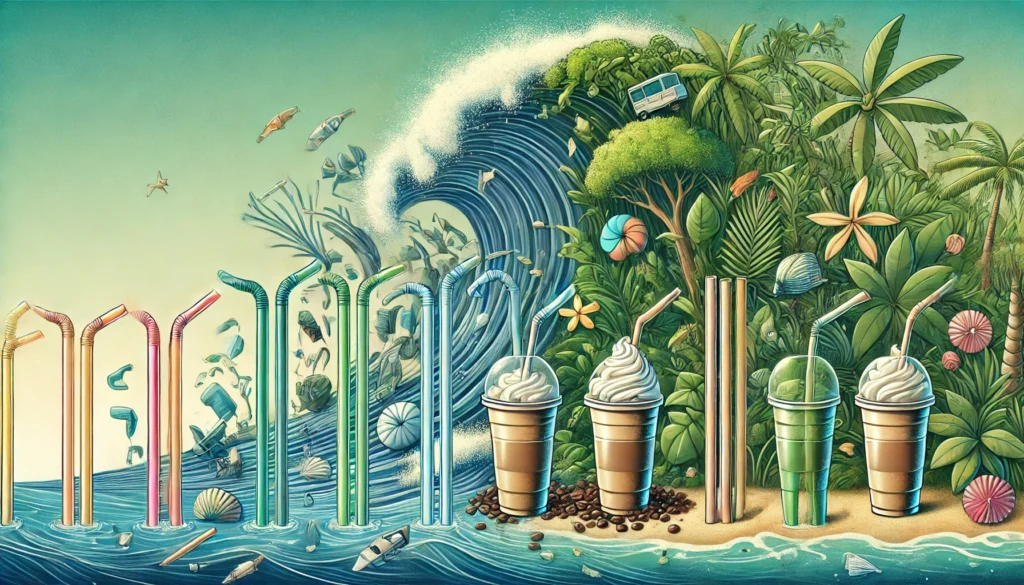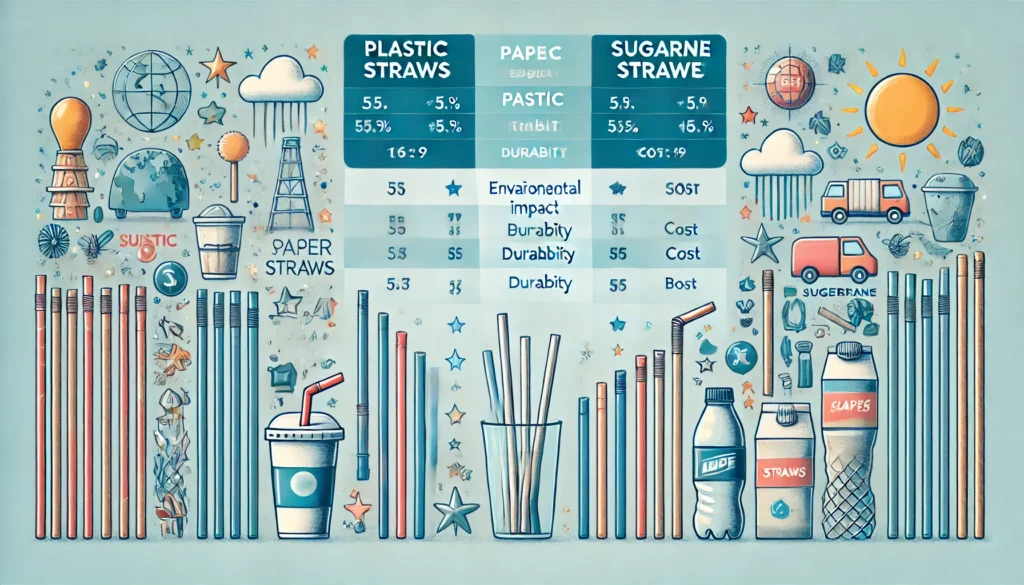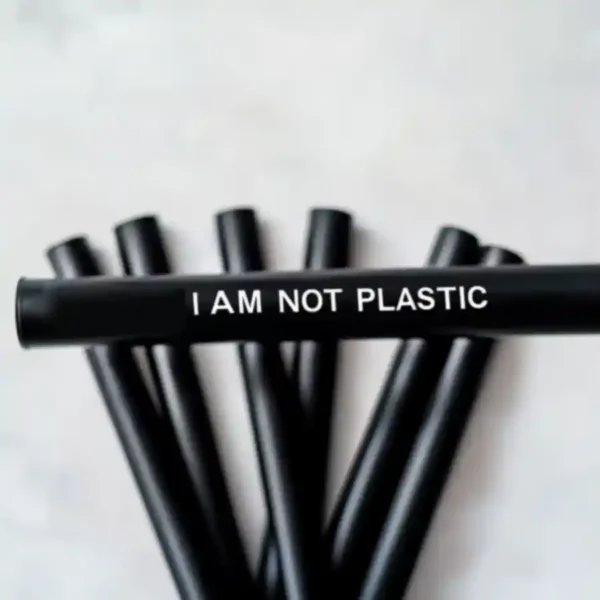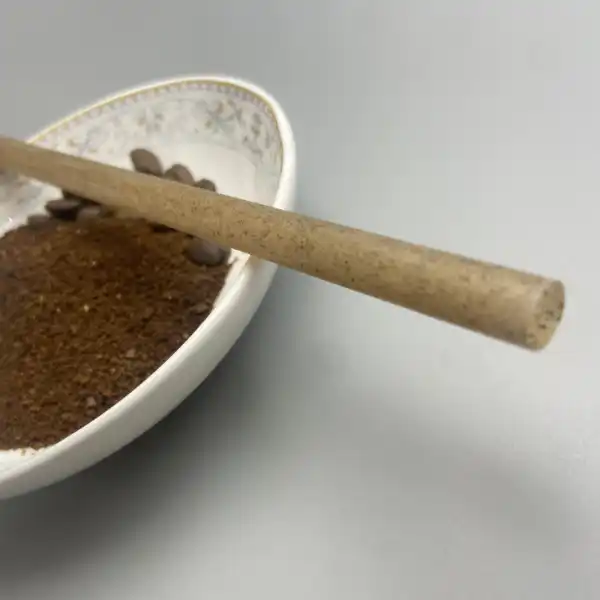1. Introduction: Why the Shift Away from Plastic?
Plastic straws have become a symbol of the environmental crisis, representing the broader issue of single-use plastics. With Americans using an estimated 500 million plastic straws daily, these seemingly small items have a huge environmental impact. Plastic straws are non-recyclable, often ending up in landfills or as litter in oceans, where they can persist for over 200 years. Their accumulation in marine ecosystems endangers wildlife, as straws can be ingested or cause entanglement, leading to injury or death for marine animals .

In response, governments and consumers worldwide have pushed for change. Regulations such as the European Union’s Single-Use Plastics Directive and California’s SB-1884 initiative aim to eliminate plastic straws altogether. Meanwhile, environmentally conscious consumers are seeking sustainable alternatives, prompting businesses to explore innovative eco-friendly options .
2. The Birth of Eco-Friendly Alternatives
The journey toward sustainable straws began in the late 2000s, driven by increasing awareness of plastic pollution. The first wave of eco-friendly straws introduced materials like paper and bioplastics. While these options had reduced environmental impacts, early versions faced challenges such as fragility and limited usability.
Despite initial drawbacks, these straws paved the way for significant innovation. For example, paper straws, among the earliest alternatives, are biodegradable and effective for short-term use. However, issues like sogginess spurred manufacturers to develop more durable options.
Related Products on NatureBioEco.com:

3. Innovative Materials of Today
Modern eco-friendly straws leverage advanced materials to enhance sustainability and usability. Some of the most notable options include:
- サトウキビストロー: Made from agricultural byproducts, sugarcane straws are durable, compostable, and have a minimal environmental footprint. Learn more about NatureBioEco’s sugarcane straws。
- コーヒー粕ストロー: These straws utilize coffee industry waste, offering a robust, heat-resistant alternative ideal for hot beverages .
- 竹ストロー: Known for their reusability, bamboo straws are biodegradable and add a unique, natural aesthetic to drinks.
- Algae-Based Straws: These straws decompose in seawater within 48 hours while absorbing CO2 during production, representing cutting-edge innovation .
Related Products on NatureBioEco.com:
Modern eco-friendly straws are designed to balance functionality with sustainability, addressing consumer demand for durable and environmentally responsible products.

4. The Future of Straws
The eco-friendly straw industry is poised for remarkable growth and transformation, driven by technological advancements and increasing consumer awareness. Some key trends include:
- Smart Materials: Innovations in adaptive materials may lead to straws that monitor drink freshness or enhance flavor with embedded probiotics.
- Stricter Regulations: Governments are likely to implement more comprehensive bans on single-use plastics, accelerating the adoption of alternatives.
- Market Expansion: By 2029, the eco-friendly straw market is projected to reach $19.68 billion, growing at a CAGR of 12.2% 。
Businesses that embrace eco-friendly solutions now are not only contributing to environmental protection but also aligning with long-term consumer and regulatory trends.
Related Products on NatureBioEco.com:
5. Conclusion: Driving Change, One Straw at a Time

The shift from plastic to eco-friendly straws signifies a larger movement toward sustainable consumer habits and business practices. With advancements in materials and technology, businesses have more options than ever to reduce their environmental impact while meeting customer demands.
For companies seeking reliable, sustainable solutions, partnering with trusted suppliers like NatureBioeco ensures access to high-quality, certified products that align with modern sustainability goals. By embracing eco-friendly alternatives, businesses can play a vital role in creating a cleaner, healthier future for our planet.







